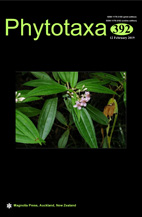Abstract
Hybridization and polyploidization appear to be ubiquitous in the evolution of Chenopodium s.s., but the origin and the evolutionary history of the polyploid chenopods is still poorly understood. Phylogenetic analyses of DNA sequences of nrITS, four plastid regions, and 5S rDNA spacer region (NTS) of five Eurasian hexaploid chenopods (2n = 6x = 54), C. album, C. giganteum, C. pedunculare C. formosanum and C. opulifolium, and their diploid and tetraploid relatives as well as genomic in situ hybridization (GISH) indicate their allohexaploid origin. The origin of all the analyzed hexaploids have been inferred to have involved B-genome diploid. The identity of the other parent/parents is more elusive. In the case of C. album, C. giganteum and C. pedunculare the second maternal parent seems to be similar to extant C. strictum or C. striatiforme or Asian diploids (e.g. C. acuminatum). In genomes of allohexaploid C. album, C. giganteum and C. pedunculare half of the rDNA were located in the chromosomes of B-subgenome. The remaining rDNA loci were placed in chromosomes originating from the other parent/parents. Although 35S rDNA loci inherited from two parental species seems to be present in these hexaploids, only one ribotype of nrITS was detected.

